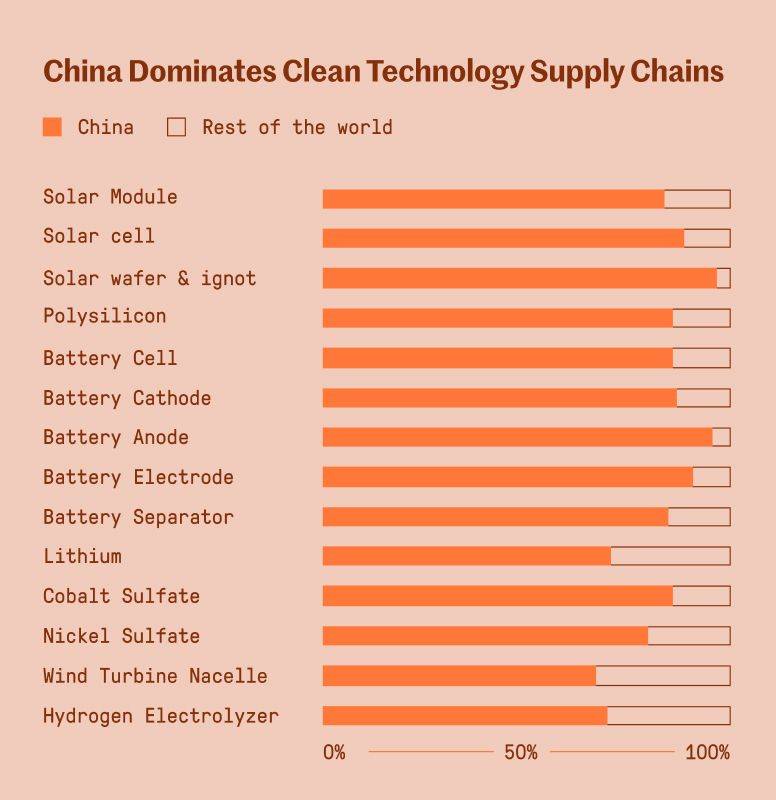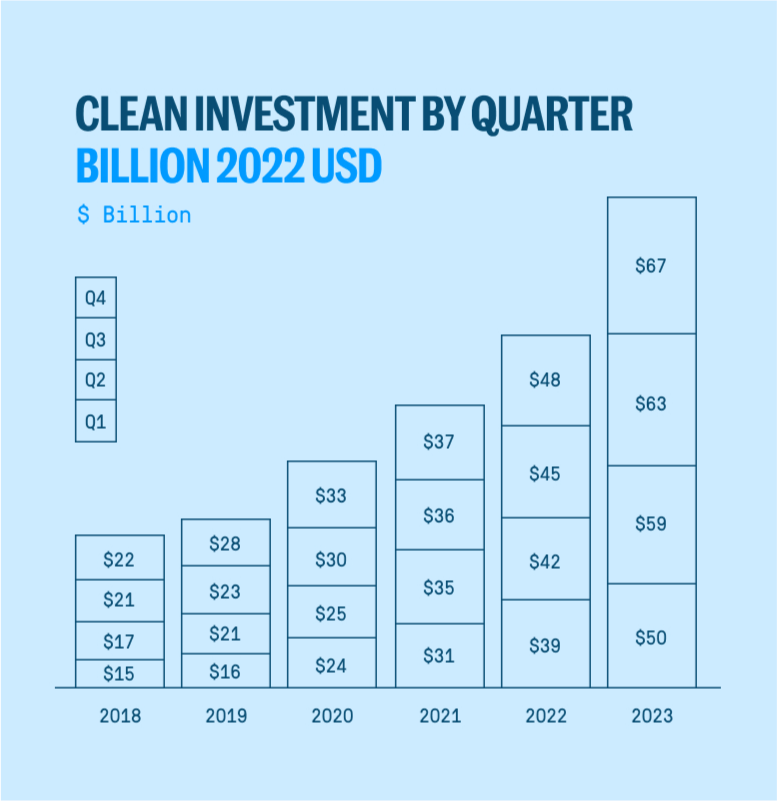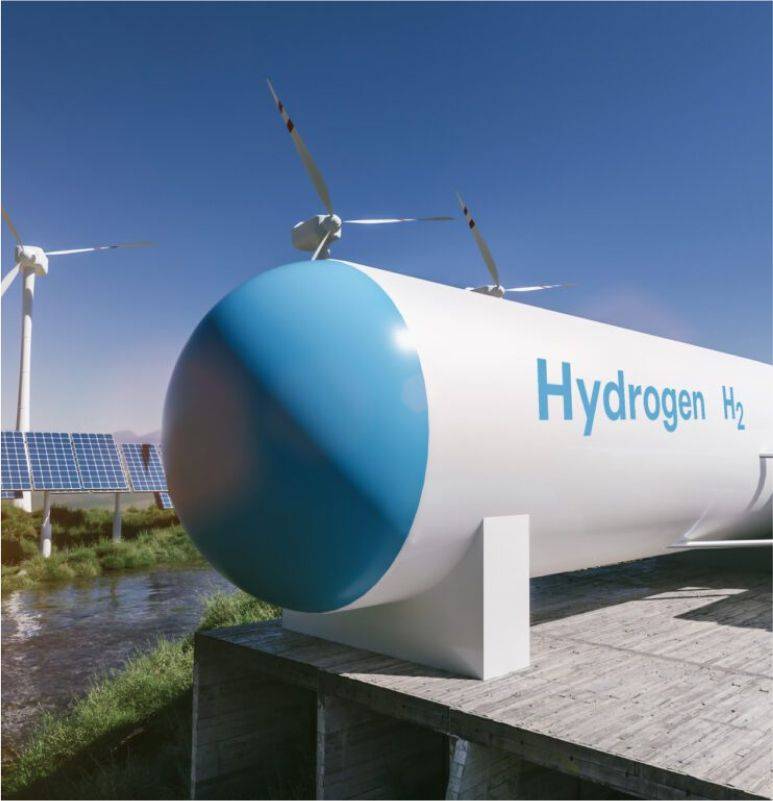Policy
Election Night for Climate Tech
In history’s biggest election year, climate policy is evolving from promises to projects.
As of this report's publication, the world is most of the way through history’s biggest election year.
Roughly 76 countries, including the U.S., representing 4 billion people, will cast ballots through the end of 2024.
There does appear to be a subtle—but important—shift in the way governments are approaching the clean energy transition.
We’re seeing a new focus on implementing existing climate policies—not just making new ones. That’s true for most of the countries that have held elections this year, regardless of the parties or leaders who won.In many cases, countries are responding to China’s ability to manufacture climate tech. From solar cells to hydrogen electrolyzers, China far outpaces the rest of the world. This flood of Chinese tech is driving down prices, but those lower prices on Chinese goods are creating challenges for other countries as they try to compete with their own climate tech.

What follows are key insights about the regions where Breakthrough Energy focuses the bulk of our operations: the United States, the United Kingdom, and the European Union.

Green, White, and Blue
Within the Department of Energy’s (DOE) Washington headquarters sits the Industrial Demonstrations Program, or the IDP. Despite its inauspicious name, this little-known initiative is actually the beating heart of America’s Clean Industrial Revolution.
The IDP was created, in part, by the Inflation Reduction Act. With a $6 billion war chest to invest, it represents the largest federal pool of funding ever devoted to reducing the carbon footprint of the industrial sector, which accounts for nearly a quarter of U.S. greenhouse gas emissions.

Over the past year, climate tech innovators submitted 400 proposals for a share of the $6 billion. Among the 33 projects the IDP selected, 12 were Breakthrough Energy-backed initiatives, including:
- 01Brimstone's revolutionary cement production facility
- 02Antora Energy's partnership with Summit Materials to carbonize their clay-based cement alternatives
- 03Rondo Energy's collaborations with Diageo, to replace natural gas with heat batteries in beverage production; and another Rondo project with Eastman using heat batteries at their molecular recycling facility.
This has been a core focus of Breakthrough Energy’s U.S. Policy team: Turning the thousands of pages of new clean energy legislation into clean energy projects.
Here are some of the 2024 highlights
- 01
$1 trillion unlocked
from government credit
Through the Inflation Reduction Act, the U.S. federal government now offers over two dozen tax credits for investors who put money into building clean energy projects. But before the money can start flowing, the Internal Revenue Service and Department of Treasury need to issue final guidance on how those tax credits can be used. The good news? Over the past few years, the federal government has been releasing a steady flow of guidance, which Breakthrough Energy believes will unlock more than $1 trillion in private sector investment.

- 02
$40B boost
for clean hydrogen
The Department of Energy announced $8 billion in funding through the Bipartisan Infrastructure Law for the creation of seven regional clean hydrogen hubs and a $1 billion demand support mechanism. This program, called H2Hubs, will reduce carbon dioxide emissions equivalent to 5 million gasoline-powered cars—every year. Just as important, the projection is that the government’s $8-billion investment will spur an additional $40 billion in private investment.

The Regional Clean Hydrogen Hubs Program (H2Hubs) includes up to $7 billion to establish regional clean hydrogen hubs across America | Source: Office of Clean Energy Demonstrations - 03
Gen 4 reactors
Finally, more nuclear power
Congress passed the ADVANCE Act, which will modernize the Nuclear Regulatory Commission (NRC) and allow the U.S. to finally unlock the limitless potential of nuclear power—namely, by streamlining the process for licensing new Generation 4 nuclear reactors. One example is TerraPower’s first-of-its-kind nuclear plant. It’s now under construction in Wyoming.

One thing to watch out for: a Chevron doctrine–less America.

The Supreme Court’s recent elimination of four decades of legal precedent, known as “the Chevron Doctrine,” could stunt the progress of the clean energy transition. Following the Court’s ruling, regulatory guidance won’t be decided by experts in agencies like the EPA. Instead, it will fall to Congress.
Additionally, federal agencies could face a flood of legal challenges when they try to take any action regarding climate tech, which means it could be even harder and take even longer to get projects off the ground.

European Green Deal
In July, Ursula von der Leyen was re-elected President of the European Commission. During her last five-year term, the Commission passed major new legislation under the banner European Green Deal. It’s now time to implement these policies across all 27 member states.
Europe continues to be committed to its climate ambitions—and to deliver greenhouse gas reductions. Its leaders have been increasingly focused on clean energy production and clean-tech manufacturing. Not only is this good for the climate, but Europe also sees these sectors as crucial to maintaining regional security and economic competitiveness.
This shift has given rise to the Green Deal’s successor program—“The Clean Industrial Deal”—which aims to accelerate investment and construction of climate tech projects and to close the gap between ambition and delivery.
- 01Putting together the pieces
On paper, the EU has everything necessary to succeed: world-class engineers, an abundance of private capital, and public banks committed to climate like the European Investment Bank. The challenge going forward is to pull all these resources and strengths together to accelerate the scale up and deployment of cleantech factories and projects in Europe.
That’s why in Europe, we’re laser focused on projects.
One way to pull together Europe’s vast resources is by making the pieces want to come together. That starts by changing the incentive structure for climate tech. In addition to the Green Deal penalties on fossil fuels, there must be clear examples of how private sector actors can benefit from completing construction on clean projects.
- 02A triple win
Already, we’re seeing European climate tech projects achieve the triple win: a win for climate, competitiveness, and security. For example, by directly funding innovative projects like Rondo Energy’s pioneering clean electric heat technology that will help Europe replace imported gas. Thanks to a €75 million investment via the EU-Catalyst Partnership, Rondo will build three projects across the EU.
These types of projects only get off the ground when there’s a conducive, supportive ecosystem. In the case of the Rondo investment, for example, the projects were initially identified by the Energy Resilience Leadership Group, a “coalition of the willing” bringing together industry leaders, policymakers, and startups to quickly get climate tech projects off the ground.

Team members from Breakthrough Energy's Catalyst and Europe teams, Rondo, and the Energy Resilience Leadership Group - 03Spotlighting cutting-edge climate tech
But it’s also about spotlighting cutting-edge climate tech solutions in Europe and the leading investors that can help these solutions scale into real projects.
BE has been supporting the climate tech movement across Europe. Through Cleantech for Europe and national/regional hubs, we’re advocating for policies that can make the "deal" part of the energy transition a reality.
As the Clean Industrial Deal gets underway, we hope to see more such projects and collaborations, and will be on hand to make Europe the climate technology leader it aspires to be.

A new Labour government
In the U.K., the July elections installed a new Labour government which has put the energy transition at the heart of its economic and growth policy proposals—a change from the previous Conservative government’s approach.
Labour has committed to decarbonizing the U.K.'s power sector by 2030, five years ahead of the previous Conservative government's target. But the new government also appears to be looking at climate with a Chief Investment Officer’s perspective. They’re focused on securing the pounds necessary for meeting their current, legally binding emissions goals.
- 01A clean innovation double-down:
The new Labour government says its goal is to “Make Britain a Clean Energy Superpower,” with many of the projects situated in the country’s industrial heartland, the area stretching from the Midlands to northern England.
One example is sustainable aviation fuel (SAF). The U.K. will soon require airlines to use 10% SAF by 2030 and 75% by 2050. The challenge will be SAF production: Where will the investment come from?
Breakthrough has been working with the Green Finance Institute, bringing together the necessary parties—government, investors, lenders, insurers, airlines—to get SAF production off the ground.

Keir Starmer, leader of the Labour Party, speaks to Labour Party members in Bollington, Cheshire, while on the General Election trail. Source: Flickr - 02New net-zero target gets an arrow:
Labour’s 2030 decarbonization target requires the country to accelerate the construction of clean projects. To speed things along, Labour is establishing GB Energy, a new government entity designed to leverage private finance in new technologies. They have also committed to establishing a new National Wealth Fund, to help unlock institutional investment for green infrastructure, such as ports, gigafactories, hydrogen, and steel projects.
While the 2030 target is ambitious, we believe it signals a clear commitment to positioning the U.K. as a leader in the global race to net-zero emissions.
- 03Re-planning:
It took 19th-century workers about 13 years to build Big Ben. It takes almost as long for 21st-century Britons to build a new grid connection—often, a decade. The new Labour government has said it will drastically shorten these timelines and has already lifted the ban on new onshore wind projects.

A final thought
"If you want to see what the cutting edge of next-gen clean energy innovation looks like, it’d be hard to find a place better than Texas."
That was Bill’s assessment after visiting the Lone Star State in March.
In a way, it’s surprising: Texas is the birthplace of the modern oil industry. How could it also be the birthplace of America’s Clean Industrial Revolution?
The answer is that the skills from the old carbon-heavy industries apply to the new carbon-neutral one.
As Bill writes:
Nearly half a million Texans work in the oil and gas industry, and their skills are directly transferrable to next-generation industries. This workforce will help form the backbone of the world’s new clean energy economy, and it will cement Texas’s energy leadership for generations to come.
Texas exemplifies a broader trend: When clean energy becomes economically competitive, the political debate shifts from "should we?" to "how can we?"
This shift in thinking is core to Breakthrough Energy's mission. We believe that achieving global net-zero emissions hinges on making carbon-free solutions as cost-effective as their carbon-intensive counterparts.
This economic imperative can unite diverse stakeholders—from environmentalists and investors to industrialists and entrepreneurs—creating a powerful coalition for change. As green premiums on clean go down, the world’s net-zero coalition will grow.
Video

